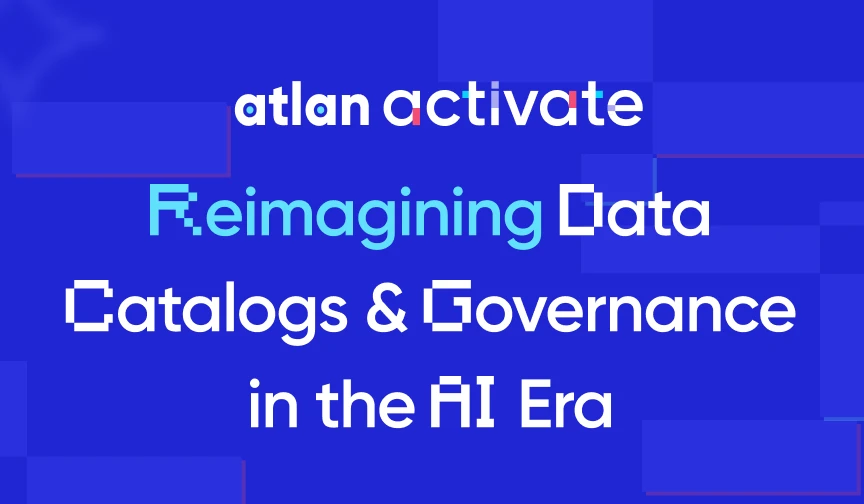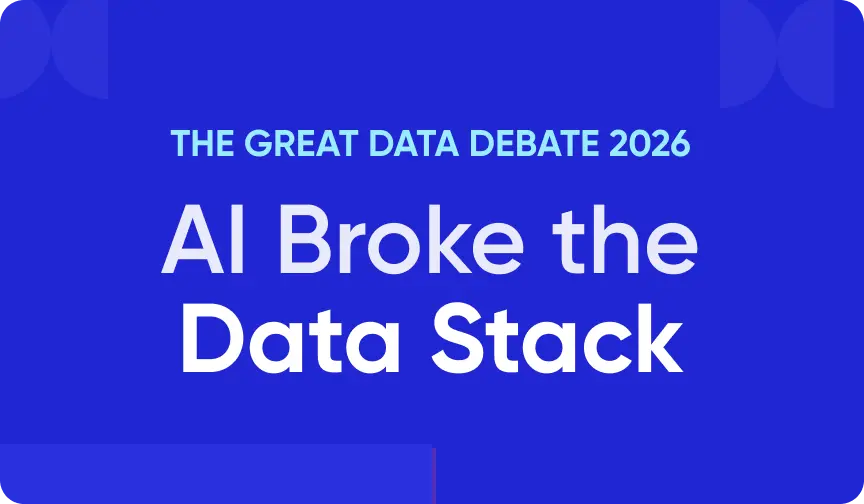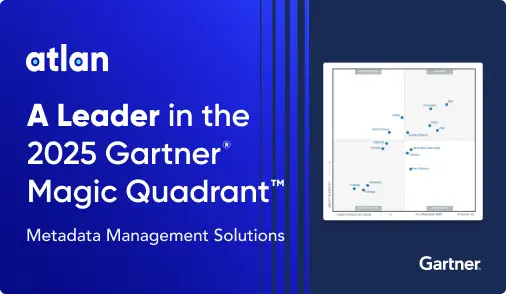Regulatory Data Lineage Tracking for Audit Success in 2025

Last Updated on: May 02nd, 2025 | 9 min read
Unlock Your Data's Potential With Atlan

Regulatory data lineage tracking helps organizations map the complete journey of data, from sourcing and transformation to consumption and activation.
While traditionally used for asset discovery, lineage has become essential for answering regulatory questions, such as how decisions are made on insurance claims or how customer data is shared with third parties.
In this article, we will cover:
- Why data lineage tracking is critical for regulatory compliance
- The role of metadata in enabling end-to-end lineage
- Key steps for effective regulatory data lineage tracking
- How to meet geography- and industry-specific compliance requirements
Table of contents
Permalink to “Table of contents”- What is the need for data lineage tracking in regulatory compliance?
- What is the role of metadata in regulatory data lineage tracking?
- How does Atlan enable granular data lineage tracking to support regulatory compliance?
- Summary
- Regulatory data lineage tracking: Frequently asked questions (FAQs)
What is the need for data lineage tracking in regulatory compliance?
Permalink to “What is the need for data lineage tracking in regulatory compliance?”Meeting regulatory compliance is usually only possible if you have compliance-related auditing, logs, and records. While cloud infrastructure, security logging, and integrations are largely automated today, the domain of data compliance often lags behind,putting organizations at risk of incurring millions of dollars in fines or reputational damage.
Regulatory data lineage tracking addresses this gap by:
- Allowing you to maintain a detailed, point-in-time view of your data, including how it was ingested, transformed, and utilized, as well as how it has been shared and activated.
- Enabling you to accurately report on incidents, whether caused by technical bugs, security breaches, or system errors.
- Simplifying compliance checking and auditing processes by providing clear, verifiable trails of how data has moved and changed.
- Preventing non-compliance fines and protecting the organization’s reputation by ensuring transparency
There are many geography-specific generic data privacy and protection laws, such as the EU AI Act, GDPR and CCPA, that have compliance requirements for all organizations. Additionally, there are industry-specific regulations, such as BCBS 239, HIPAA, NERC, and CIP.
Let’s look at examples from both industry-specific and geography-specific regulations.
Industry example: Meeting BCBS-239 requirements for G-SIBs
Permalink to “Industry example: Meeting BCBS-239 requirements for G-SIBs”The BCBS 239 principles for risk data aggregation and reporting mandate that all Global Systemically Important Banks (G-SIBs) follow 14 principles encompassing governance, data architecture and IT infrastructure, accuracy and integrity, timeliness, and comprehensiveness, among others.
While the report doesn’t explicitly mention “data lineage” as a requirement, the intent is clear. Data lineage is crucial to addressing those requirements. Some examples include:
- Banks must understand data flows in detail, from sourcing to transformation to reporting.
- Banks must address data quality issues to maintain model accuracy, especially for risk management.
- Banks must demonstrate reporting accuracy and reproducibility, ensuring no untracked manual intervention or any other issues in the data’s journey through to reports.
Also, read → BCBS 239 data lineage: What banks need to know
To meet these expectations, organizations must:
- Design and implement a framework that automates data journey mapping and data lineage, which helps with root cause and impact analysis.
- Ensure that there’s minimal human intervention in managing data lineage, and even if there is, it should be traceable.
- Conduct regular internal and external assessments of the data architecture to make sure it supports efficient metadata management to enable data lineage at scale.
Let’s now examine a geography-specific regulation known as the EU AI Act.
Geography example: Complying with the EU AI Act
Permalink to “Geography example: Complying with the EU AI Act”The EU AI Act is set to become the world’s most comprehensive regulation of AI systems. It places significant emphasis on data governance, flows, logging, and traceability, which require comprehensive data lineage capture and maintenance.
Due to the black box nature of AI systems, the act mandates that there be extensive logging, auditing, and record-keeping of how data has been sourced, transformed, blended, enriched, and modified before being consumed for reporting or decision-making purposes.
Fines for non-compliance with high-risk AI requirements under the EU AI Act could range from €7.5 million to €35 million. This can be prevented with the following set of activities:
- Collect and store metadata to provide to end-users, increasing their awareness of your organization’s use of AI that pertains to them.
- Have human oversight for critical interactions and decisions where AI has been used in any capacity.
- Build a monitoring framework to send notifications and raise alerts if it detects any outliers.
- Train the organization’s workforce to raise AI awareness, especially with respect to critical decision-making for customers
To track data lineage at the level needed for regulatory compliance, you must first build a strong metadata foundation. In the next section, we’ll explore the critical role of metadata in enabling regulatory data lineage tracking.
What is the role of metadata in regulatory data lineage tracking?
Permalink to “What is the role of metadata in regulatory data lineage tracking?”Metadata is central to understanding how data flows through complex systems. In software engineering, decoupling systems through protocols like REST or serialization formats like JSON help maintain flexibility across applications.
While it’s not a like-for-like comparison, metadata helps you do just that for data systems. Metadata enables you to remain agnostic of underlying data systems while still capturing meaning about data structures, flows, and transformations.
Metadata is the foundation on which you build automation across your software systems, be it for critical decision-making around medical diagnoses, insurance claims, loan applications, and more.
In regulatory data lineage tracking, metadata plays a very critical and foundational role by addressing the need for:
- Audit logs and trails to capture data movement from source to target
- Detailed contextual logging for reproducibility of reports and other data assets
- Access control policies and their enforcement at any given point in time
- Data quality checks and assessments over time
Recognizing metadata’s role is the first step toward enabling regulatory data lineage tracking.
The next step is implementing the right tools and frameworks that can capture, manage, and visualize this metadata at scale, which is where a modern metadata control plane becomes essential. This is a construct that allows you to manage all your data assets, along with their contexts, interdependencies, mappings, and journeys in one single place.
In the next section, let’s look at what a metadata control plane for data with advanced regulatory data lineage tracking capabilities would look like.
How does Atlan enable granular data lineage tracking to support regulatory compliance?
Permalink to “How does Atlan enable granular data lineage tracking to support regulatory compliance?”Once the importance of metadata is clear, selecting the right tools for regulatory data lineage tracking becomes critical. There are a few key things that you want your data lineage tool to do for maximizing value of your data estate and ensure regulatory compliance:
- Automated data lineage so that you don’t have to manually bring in or rearrange metadata to create data lineage
- The ability to edit data lineage manually (but with full auditing of any changes made) to fix any mistakes in automated lineage
- Granularity of data lineage is very important because the key decision-making that needs to be reported for compliance purposes seldom happens at the data asset level. It rather happens at the column or field level
- The ability to use lineage metadata to perform root cause and impact analyses, which is required by several regulations
Atlan’s metadata control plane meets all these needs. It automatically constructs end-to-end data lineage by mapping how data assets move, transform, and are consumed across your organization’s systems.
With Atlan’s lineage visualizer, teams can interactively trace data flows, investigate dependencies, and prepare defensible regulatory reports. Moreover, Atlan makes the underlying lineage metadata accessible for analysis, enabling deeper compliance reporting, audit readiness, and faster response times in case of investigations.
With this foundation, organizations can confidently manage regulatory obligations across finance, healthcare, and other highly regulated industries.
Summary
Permalink to “Summary”This article explored why regulatory data lineage tracking is becoming critical for compliance leaders and data governance teams. We looked at real-world regulatory drivers such as BCBS 239 for global banks and the EU AI Act for AI governance.
You learned how metadata provides the foundation for reliable lineage tracking and why granular, automated, and auditable lineage is essential to avoid regulatory risks.
Atlan, built on a unified metadata control plane, offers the capabilities needed to manage metadata at scale, visualize complex data flows, and meet compliance obligations confidently. For a deeper look into how Atlan enables regulatory data lineage tracking, head over to Atlan’s data lineage documentation for more information.
Regulatory data lineage tracking: Frequently asked questions (FAQs)
Permalink to “Regulatory data lineage tracking: Frequently asked questions (FAQs)”1. What is regulatory data lineage tracking?
Permalink to “1. What is regulatory data lineage tracking?”Regulatory data lineage tracking is the process of mapping and documenting how data moves, transforms, and is used across systems to meet regulatory requirements. It helps organizations ensure data integrity, trace decisions, and respond quickly (and comprehensively) to audits.
2. How does regulatory data lineage tracking work?
Permalink to “2. How does regulatory data lineage tracking work?”Regulatory data lineage tracking works by automatically collecting metadata about data sources, transformations, movements, and outputs across your environment. This metadata is organized into visual or structured maps, showing how data flows through systems, which is essential for audits, compliance checks, and trust in data.
3. Why is regulatory data lineage important for compliance?
Permalink to “3. Why is regulatory data lineage important for compliance?”Regulatory data lineage provides transparency into how critical decisions are made, such as approving loans or processing insurance claims. It helps demonstrate due diligence, ensures reproducibility of reports, and is essential for meeting laws like BCBS 239, GDPR, and the EU AI Act.
4. What metadata is essential for regulatory data lineage?
Permalink to “4. What metadata is essential for regulatory data lineage?”Essential metadata includes data source details, transformation logic, access and change logs, audit trails, and system interaction records. Tracking this metadata helps reconstruct data histories and ensures accountability across systems and teams.
5. What is the difference between metadata and lineage?
Permalink to “5. What is the difference between metadata and lineage?”Metadata describes the attributes, origin, and usage of a data asset (such as owner, tags, sensitivity). Lineage shows the flow and transformation of data across systems over time.
Metadata provides the raw information needed to build lineage views.
6. What are some examples of regulatory data lineage tracking in practice?
Permalink to “6. What are some examples of regulatory data lineage tracking in practice?”Examples include tracking how customer data flows through a bank’s credit decision system to meet BCBS 239, or tracing patient record usage across healthcare systems to comply with HIPAA.
In AI governance, lineage helps document how training data influences model outcomes.
7. What industries most urgently need regulatory data lineage tracking?
Permalink to “7. What industries most urgently need regulatory data lineage tracking?”Industries like banking, insurance, healthcare, and energy, where data is subject to strict oversight, need strong regulatory data lineage. Compliance frameworks like BCBS 239, HIPAA, GDPR, and the EU AI Act make it essential.
8. What are common challenges with regulatory data lineage tracking?
Permalink to “8. What are common challenges with regulatory data lineage tracking?”Organizations often struggle with incomplete or fragmented metadata, manual lineage mapping, poor integration across systems, and scalability issues. Addressing these challenges requires centralized metadata management and automation.
9. How can organizations start implementing regulatory data lineage tracking?
Permalink to “9. How can organizations start implementing regulatory data lineage tracking?”Start by cataloging critical data assets, automating metadata collection, and mapping key regulatory processes. Choose tools that can visualize lineage dynamically and track lineage changes over time to support audit-readiness.
Share this article
Atlan is the next-generation platform for data and AI governance. It is a control plane that stitches together a business's disparate data infrastructure, cataloging and enriching data with business context and security.
Regulatory data lineage tracking: Related reads
Permalink to “Regulatory data lineage tracking: Related reads”- What is Data Governance? Its Importance, Principles & How to Get Started?
- Data Governance and Compliance: An Act of Checks & Balances
- Data Governance and GDPR: A Comprehensive Guide to Achieving Regulatory Compliance
- Data Compliance Management in 2025
- Automated Data Governance: How Does It Help You Manage Access, Security & More at Scale?
- Enterprise Data Governance Basics, Strategy, Key Challenges, Benefits & Best Practices
- Data Governance in Banking: Benefits, Challenges, Capabilities
- Financial Data Governance: Strategies, Trends, Best Practices
- BCBS 239 Data Governance: What Banks Need to Know in 2025
- Financial Data Compliance Software: What Qualities Matter in 2025





















